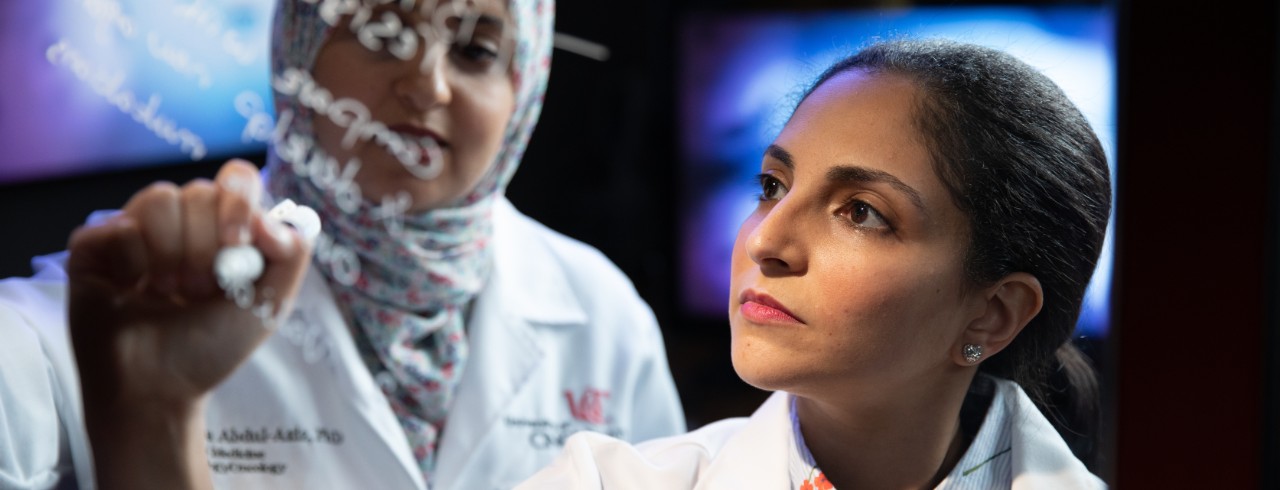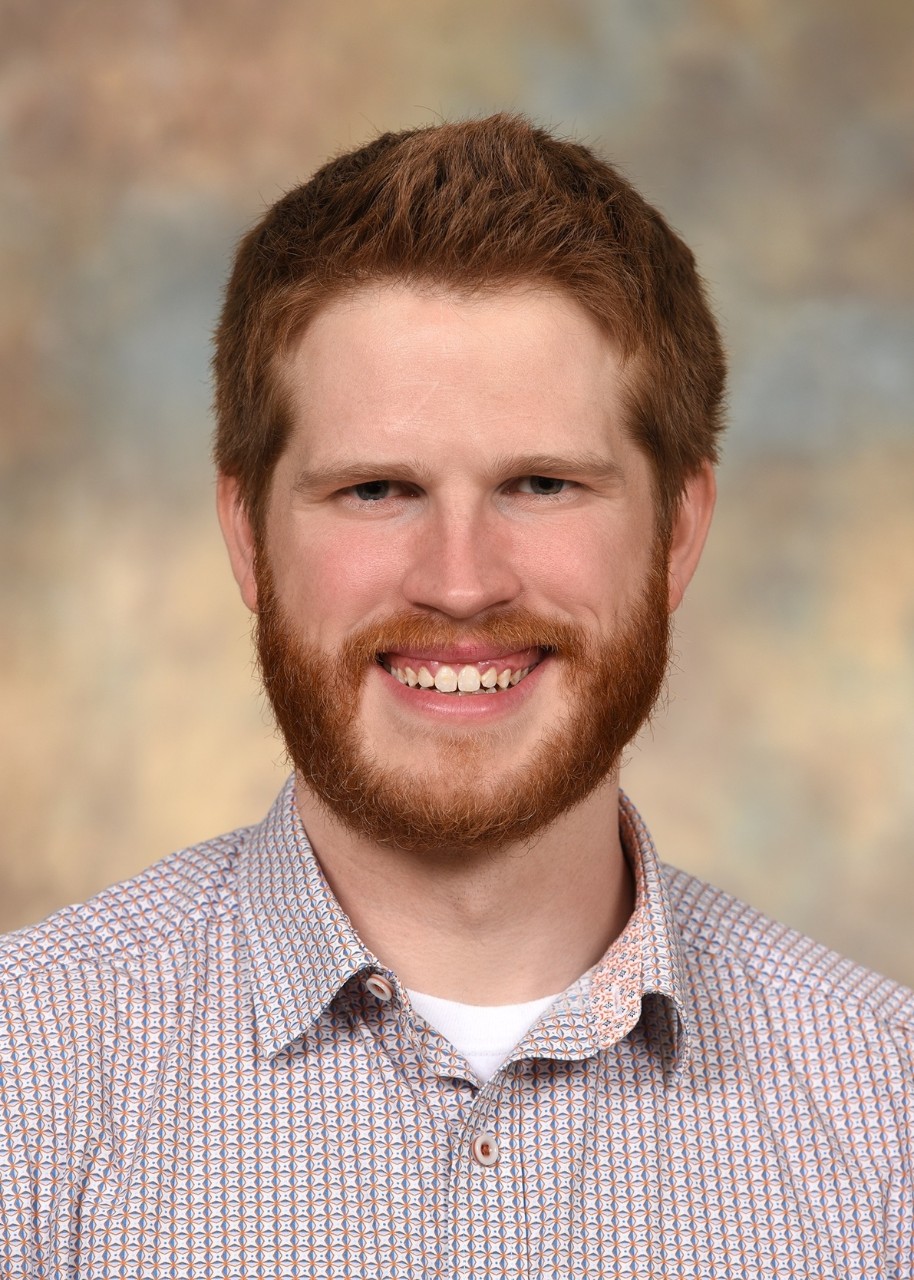
UC hematology experts present research at national conference
Advances in leukemia treatments, sickle cell population research highlight ASH abstracts
University of Cincinnati Cancer Center researchers will present abstracts at the American Society of Hematology (ASH) Annual Meeting, held Dec. 9-12 in San Diego, California.
Trial finds new drug shows promise to treat CLL
Phase 2 clinical trial results suggest a new drug has the potential to be the most targeted drug in its class evaluated for the treatment of chronic lymphocytic leukemia (CLL) or small lymphocytic lymphoma (SLL) and offers potential for improved efficacy and safety.
The University of Cincinnati Cancer Center’s John C. Byrd, MD, said a group of drugs known as BTK inhibitors have become the backbone of treatment for CLL and SLL. The trial tested a new BTK inhibitor that specifically targets the enzyme BTK in a more targeted manner than other similar drugs.
The multicenter trial enrolled a total of 84 patients, including those whose CLL had returned or stopped responding to treatment (relapsed/refractory) and those who had not received any previous treatments (treatment naive). Patients were randomized to receive either 100 or 150 milligrams of the trial drug twice a day in each patient group.

Erin Hertlein, PhD, left, and John Byrd, MD, work in the Leukemia and Drug Development Lab, where researchers are dedicated to creating and advancing cutting-edge technology to advance treatments for patients with blood cancers. Photo/UC Foundation
At a median follow-up of 23 months, 86% of relapsed/refractory patients taking the 100 milligram dose and 81% of those taking 150 milligram doses had at least a partial response to the drug. At a median follow-up of eight months, 86% of treatment naive patients at both doses had at least a partial response, but those in the 150 milligram group had a faster response.
Overall, Byrd said treating patients with the new BTK inhibitor led to rapid reduction of leukemic cells, with earlier and deeper responses than expected for a drug in its class. Relapsed/refractory patients have been able to remain in remission, and the drug was found to be “exceptionally” safe, with a low incidence of adverse reactions.
“While our current approved BTK inhibitors represent a major therapeutic advance for CLL, this drug is even more selective for BTK and offers opportunity for both improved efficacy and safety over other agents,” said Byrd, Gordon and Helen Hughes Taylor endowed chair and professor of internal medicine in UC’s College of Medicine. “We are excited for what this drug represents."
Research identifies potential combination therapy to improve AML treatment

Eric Vick, MD, PhD. Photo/University of Cincinnati.
IRAK4 is a protein known to help drive growth of acute myeloid leukemia (AML) cells through overactivation, making it a potential target for new treatments. Unfortunately, initial trials suggest treatments that target the protein may have limited effect on their own (as monotherapy).
Cancer Center researcher Eric Vick, MD, PhD, and colleagues sought to identify which target would be most effective at killing cells after being weakened by the reduction of the protein.
“After you have combined the loss of IRAK4 with different pharmacologic agents, you create a situation that is lethal for the cells,” said Vick, a clinical fellow working in Daniel Starczynowski’s lab at Cincinnati Children’s who will join UC’s faculty in January.
Vick said the team tested more than 2,400 small molecules to compare their effectiveness in killing normal AML cells and those that did not have overactive IRAK4. They found one compound was especially effective at killing AML cells by reducing the levels of a different protein called c-myc that drives cancer growth.
“It degrades c-myc using the cell’s machinery, and as a result, we’re able to drop the levels of c-myc to a point where the cells can’t survive,” Vick said. “Many cancer cells rely on high levels of c-myc in order to survive, so part of what we’ve been studying is how much AML requires for survival. The loss of IRAK4 signaling allows a faster and lower reduction than would normally be possible in these cells.”
Many drugs have been developed to target c-myc without much clinical success, so Vick said moving forward the team will test the use of this class of drugs with IRAK4 inhibitors as an alternative approach to target leukemia.
“What we’re hoping to do is create a situation where we can sensitize patients with leukemia with a relatively mild, very tolerable drug — the IRAK4 inhibitor — and then treat with a second, more robust drug that can wipe out all the leukemia cells,” he said. “As always, we’re trying to extend remissions and develop a cure.”
Overall sickle cell death rate declining, but increasing among young adults

Kristine Karkoska, MD. Photo/University of Cincinnati.
A review of U.S. mortality statistics found the sickle cell disease (SCD) mortality rate has significantly decreased over the past 40 years as treatments have improved, but the mortality rate has increased for young adults.
SCD is a blood disorder that can cause a variety of symptoms in patients, including stroke and cognitive impairment. It is one of the most common inherited disorders in the U.S. that primarily affects people of African ancestry, with 10% of African Americans having sickle cell trait and 1 in 365 having SCD.
The University of Cincinnati’s Kristine Karkoska, MD, said the most significant improvement to SCD treatment in recent decades was the introduction of the medication hydroxyurea. Other improvements in care include the implementation of universal newborn screening in 2006 that allows for early diagnosis and establishment of care and the establishment of comprehensive SCD care centers, particularly in pediatric settings.
From 2010-2020, the overall SCD crude mortality rate was 1.1 per 100,000 Black individuals, a decrease from 1.2 per 100,000 from 1999-2009. Of the 5,272 SCD-related deaths from 2010-20, 61% listed SCD as the primary cause of death, with cardiovascular disease (28%), accidents and cerebrovascular disease (both 7%), malignancy (6%), septicemia (4.8%) and renal disease (3.8%) being the next most common primary causes of death.
“The decrease in overall mortality was what we expected and had hoped to see,” said Karkoska, assistant professor of internal medicine in UC’s College of Medicine. “I was most struck by the degree of non-SCD related chronic diseases that were included in mortality data.”
The crude mortality rate for patients aged 15-19 increased from 0.9 per 100,000 in 1999-2009 to 1.4 per 100,000 in 2010-20, which Karkoska said highlights the need for better care as patients transition from pediatric to adult care. While there are no easy fixes and research is ongoing to improve the transition of care for many chronic diseases that begin in childhood, Karkoska said communication between pediatric and adult programs is vital.
“In addition, the pediatric program needs to treat the young person as an adult, while the adult program needs to recognize that newly-transitioned young adults often require additional oversight initially,” she said. “I have been uniquely positioned to see this as a pediatric hematologist who now cares for young adults.”
New drug targets mutation, helps overcome treatment resistance in AML lab models

Ola A. Elgamal, PhD. Photo/University of Cincinnati.
More than 30% of acute myeloid leukemia (AML) patients have a mutation that helps the cancer grow and thrive. There are currently available medications that target this mutation that are effective, but tumor cells often develop additional mutations that lead to drug resistance.
Researchers including Ola A. Elgamal, PhD, in the Cancer Center’s Leukemia and Drug Development Lab are developing new therapies to overcome this drug resistance and make treatments more effective. Elgamal and colleagues particularly focused on targeting the most common mutation that leads to resistance, known as a “gatekeeper” mutation.
The research team tested a new compound in the lab and found it works “very well” against the gatekeeper mutation and shows promise as a treatment that could help lead to long-term survival for patients with AML. A Phase 1 clinical trial in healthy volunteers is currently underway to determine the best dose of the treatment in humans, Elgamal said.
“That will allow us to move forward and test it in AML patients that have a positive mutation,” said Elgamal, assistant professor in the UC College of Medicine’s Division of Hematology/Oncology. “We are also using some novel animal models to understand how the immune system contributes to the prolonged response to this type of therapy.”
Impact Lives Here
The University of Cincinnati is leading public urban universities into a new era of innovation and impact. Our faculty, staff and students are saving lives, changing outcomes and bending the future in our city's direction. Next Lives Here.
University of Cincinnati involvement at ASH includes:
- Vick presenting “Synthetic Lethal Interactions with IRAK4 Inhibition in Myeloid Malignancies” Dec. 9.
- Jahnavi Gollamudi, MD, assistant professor in the Department of Internal Medicine in UC’s College of Medicine, presenting the poster “The Role of P-Selectin in Microvascular Hemodynamics and Cerebral Brain Volumes in Aging Sickle Cell Mice” Dec. 10.
- Byrd presenting the poster “A Phase (Ph) 2 Study of TL-895, a Highly Selective, Novel Covalent BTK Inhibitor (BTKi), in Patients (pts) with Treatment-Naïve (TN) and Relapsed/Refractory (R/R) BTKi-Naïve Chronic Lymphocytic Leukemia (CLL) or Small Lymphocytic Lymphoma (SLL)” Dec. 11.
- Emily Curran, MD, assistant professor in the UC College of Medicine’s Division of Hematology Oncology, presenting the educational session “Not Kids Anymore and Not Adults Yet: How Do We Treat Adolescent and Young Adult (AYA) Patients With ALL?” and the poster “Ubtf- Tandem Duplications Are Recurrent Somatic Genetic Events in Adult AML and Associate with Additional Structural Variants and a Distinct Gene Expression Profile” Dec. 11.
- Karkoska presenting “Changing Trends in Sickle Cell Disease-Related Mortality in the United States over Four Decades” Dec. 11.
- Elgamal presenting the poster “Therapeutic Targeting of FLT3 Gate Keeper Mutation with E2082-0047 in Traditional and a Novel Immunocompetent Murine Adoptive Transfer Model of AML” Dec. 11.
- Chia Sharpe, PhD, postdoctoral fellow in the UC College of Medicine’s Division of Hematology Oncology, presenting the posters “Development of a Fully Immunocompetent Adoptive Transfer In Vivo Model of Npm1cA;Idh2R140Q;Flt3ITD AML” Dec. 9 and “A Novel Selective BCL2 Inhibitor with Limited Immune Suppression and Improved Safety Compared to Venetoclax” Dec. 11.
Featured photo at top of Ola Elgamal working at a whiteboard. Photo courtesy of UC Health.
Related Stories
UC joining National Cancer Institute clinical trials network a 'big deal' for patients
October 17, 2023
The University of Cincinnati Cancer Center has joined the National Cancer Institute’s Experimental Therapeutics Clinical Trials Network (ETCTN), providing patients with access to cutting edge treatments only available through the network.
Local 12, Business Courier highlight Blood Cancer Healing Center
February 19, 2024
Local 12 and the Cincinnati Business Courier highlighted the University of Cincinnati Cancer Center's Blood Cancer Healing Center, a comprehensive all-in-one facility dedicated solely to advancing research, treatment and wellness for blood cancer patients, opening this summer.
Pioneering new targeted treatments
June 10, 2022
The University of Cincinnati's Pier Paolo Scaglioni, MD, has received a $1.5 million National Cancer Institute grant to continue research into the roles of the KRAS gene and lipids in lung cancer.
